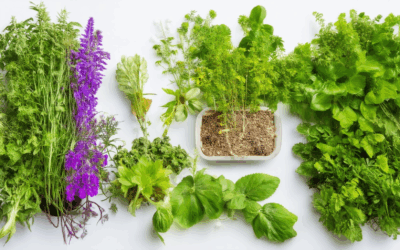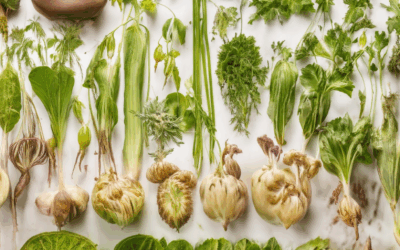In today’s fast-paced world, many are seeking ways to live more sustainably, and their backyards have become a focal point for these efforts. Whether it’s through backyard farming, eco-friendly practices, or creating a haven that aligns with environmental values, the concept of backyard sustainability is gaining traction. This article delves into the intricacies of sustainable backyard practices, exploring how you can transform your outdoor space into an eco-friendly oasis. From understanding the sustainability of backyard farming to implementing practices that benefit both the environment and your lifestyle, we’ll cover actionable strategies that make a difference. Discover how small changes in your backyard can lead to significant positive impacts, and learn about the tools and resources available to support your journey toward a more sustainable lifestyle.
Key Takeaways
- Composting: Reduces landfill waste and enriches soil, promoting plant growth.
- Mulching: Enhances moisture retention, suppresses weeds, and regulates soil temperature.
- Water Conservation: Uses efficient methods like drip irrigation to minimize water use.
- Crop Rotation: Maintains soil health, prevents pests, and boosts biodiversity.
- Companion Planting: Benefits plants and supports pollinators, creating a balanced ecosystem.
- Organic Pest Control: Uses natural methods like ladybugs to manage pests without chemicals.
- Vertical Gardening: Maximizes space and increases productivity with trellises.
- Local Seed Selection: Ensures plants thrive in their specific climate and soil conditions.
- Biodiversity: Incorporates native plants to support local wildlife and ecological balance.
- Rainwater Harvesting: Collects and stores rainwater for efficient garden use.
Is Backyard Farming Sustainable?
Yes, backyard farming is a highly sustainable practice that offers numerous environmental, economic, and social benefits. By growing your own fruits, vegetables, and herbs in a controlled setting, you contribute to a more sustainable lifestyle while enjoying fresh, organic produce.
Key Benefits of Backyard Farming
- Environmental Sustainability
- Reduces carbon footprint by minimizing transportation needs for fresh produce.
- Lowers chemical use compared to conventional farming, as smaller spaces require fewer pesticides and fertilizers.
- Promotes biodiversity by supporting pollinators and wildlife in urban areas.
- Economic Sustainability
- Saves money on groceries while providing fresh, nutrient-dense food.
- Enhances self-sufficiency and reduces reliance on global supply chains.
- Creates job opportunities in local communities through urban farming initiatives.
- Social Sustainability
- Strengthens community bonds by fostering shared interests in gardening and food production.
- Provides educational opportunities for children and adults about where food comes from and sustainable practices.
Getting Started with Sustainable Backyard Farming
To ensure your backyard farming efforts are sustainable, consider the following tips:
- Choose the Right Location : Select a sunny spot with easy access to water and shelter from wind.
- Start Small : Begin with container gardens or small raised beds to test your green thumb.
- Use Composting : Create a compost pile to enrich your soil naturally.
- Practice Crop Rotation : Rotate crops to maintain soil health and prevent pests.
- Opt for heirloom and native varieties : These plants are better adapted to your local climate and conditions.
By adopting sustainable practices and sharing your knowledge with others, you can help create a more resilient and self-reliant society. Explore more resources on sustainable gardening techniques and urban farming to take your backyard farming to the next level.
How Can I Make My Yard More Environmentally Friendly?
To make your yard more environmentally friendly, consider implementing the following strategies:
- Utilize Native Plants : Choose plants indigenous to your region. These plants are well-adapted to local conditions, requiring less water and fewer pesticides, and they support local biodiversity.
- Install Rain Barrels : Capture rainwater for watering plants, reducing your reliance on tap water and minimizing stormwater runoff. Consider purchasing a rain barrel system or consulting local companies for installation.
- Start Composting : Convert kitchen scraps and yard waste into nutrient-rich compost. Begin with a DIY compost bin or explore local services for composting solutions to enrich your soil naturally.
- Apply Mulch : Use mulch to retain moisture, suppress weeds, and regulate soil temperature. Research types like wood mulch, rubber mulch, or straw mulch to find the best fit for your needs.
- Reduce Chemical Use : Minimize synthetic fertilizers and pesticides. Opt for organic alternatives such as compost or natural pesticides to protect beneficial insects and promote environmental health.
- Create Wildlife Habitats : Add birdhouses or nesting boxes to support local bird populations. Leave natural areas untouched to provide shelter and food for wildlife.
- Introduce Water Features : Install a pond or birdbath to attract wildlife and enhance your yard’s aesthetic appeal. Ensure proper maintenance and water quality by consulting local guidelines.
- Reduce Lawn Size : Replace portions of your lawn with ground cover or rocks to minimize maintenance and water usage. Research suitable ground covers for your climate.
- Plant Strategically : Select trees and shrubs that provide shade and reduce the urban heat island effect. Choose varieties suited to your soil and climate for maximum benefit.
- Adopt Solar Lighting : Use solar-powered outdoor lights to reduce energy consumption. Explore affordable, easy-to-install options to illuminate your yard efficiently.
- Manage Waste Responsibly : Collect food scraps for composting and recycle yard waste to reduce landfill contributions. Check with your local authorities for available programs.
- Educate Yourself : Visit reputable sources like Old Seed for insights and guides on sustainable gardening practices to enhance your efforts.
By following these steps, you can create a yard that is both beautiful and environmentally conscious, contributing positively to the ecosystem and reducing your ecological footprint.
How to Turn Your Backyard Into an Ecosystem
To transform your backyard into a thriving ecosystem, follow these organized steps:
- Assess Your Site
- Conduct a soil test to determine texture and pH levels.
- Evaluate water flow patterns and natural drainage.
- Create swales or basins to capture and store rainwater.
- Install permeable surfaces to reduce runoff and replenish groundwater.
- Plan a food forest with layered vegetation (trees, shrubs, herbs, vegetables).
- Consider microclimates and select plants suited to each area.
- Add organic matter like compost to enhance soil fertility and structure.
- Mulch areas to retain moisture and suppress weeds.
- Choose native plants for low maintenance and adaptability.
- Incorporate herbs and fruit-bearing plants for utility.
- Set up bird feeders and nesting boxes to attract birds and pollinators.
- Install water features like ponds or birdbaths to support wildlife.
- Provide cover with logs, rocks, or dense vegetation.
- Use plants that repel pests and provide nutrients or shade.
- Research specific combinations for your region.
- Plant vegetables, herbs, and fruits in designated areas.
- Consider a small orchard for fruit production.
- Compost kitchen scraps and yard waste.
- Utilize greywater for irrigation systems.
- Regularly weed, prune, and monitor plant health.
- Keep a journal to track successes and adjustments.
- Consider future expansion and self-sufficiency goals.
- Designate areas for additional trees or garden expansions.
- Aim for diverse plant and animal species to enhance resilience.
- Regularly evaluate and adjust the ecosystem to thrive.
Sustainable Practices for a Backyard Garden
Here are some effective sustainable practices for maintaining a thriving backyard garden:
- Composting : Turn kitchen scraps and yard waste into nutrient-rich compost. This reduces landfill waste and enriches your soil, promoting healthy plant growth.
- Mulching : Apply organic mulch, such as wood chips or leaves, to retain moisture, suppress weeds, and regulate soil temperature.
- Water Conservation : Use drip irrigation systems or rain barrels to minimize water usage and ensure efficient watering.
- Crop Rotation : Rotate crops to maintain soil health and prevent pests and diseases. This practice also enhances biodiversity.
- Companion Planting : Grow plants that benefit each other, such as marigolds (to deter pests) and tomatoes (to support pollinators).
- Organic Pest Control : Use natural methods like ladybugs or neem oil to manage pests instead of synthetic chemicals.
- Vertical Gardening : Utilize space-saving structures like trellises or hanging baskets to grow plants vertically, maximizing garden productivity.
- Cover Crops : Plant cover crops during the off-season to protect soil, reduce erosion, and provide nutrients for future crops.
- Local Seed Selection : Choose seeds and plants suited to your local climate and soil conditions to minimize environmental impact and maximize success.
- Biodiversity : Incorporate native plants and pollinator-attracting flowers to support local wildlife and create a balanced ecosystem.
By adopting these practices, you can create a sustainable backyard garden that thrives while benefiting the environment.
Sustainable Practices for a Backyard Garden
Here are some effective sustainable practices for maintaining a thriving backyard garden:
- Composting : Turn kitchen scraps and yard waste into nutrient-rich compost. This reduces landfill waste and enriches your soil, promoting healthy plant growth.
- Mulching : Apply organic mulch, such as wood chips or leaves, to retain moisture, suppress weeds, and regulate soil temperature.
- Water Conservation : Use drip irrigation systems or rain barrels to minimize water usage and ensure efficient watering.
- Crop Rotation : Rotate crops to maintain soil health and prevent pests and diseases. This practice also enhances biodiversity.
- Companion Planting : Grow plants that benefit each other, such as marigolds (to deter pests) and tomatoes (to support pollinators).
- Organic Pest Control : Use natural methods like ladybugs or neem oil to manage pests instead of synthetic chemicals.
- Vertical Gardening : Utilize space-saving structures like trellises or hanging baskets to grow plants vertically, maximizing garden productivity.
- Cover Crops : Plant cover crops during the off-season to protect soil, reduce erosion, and provide nutrients for future crops.
- Local Seed Selection : Choose seeds and plants suited to your local climate and soil conditions to minimize environmental impact and maximize success.
- Biodiversity : Incorporate native plants and pollinator-attracting flowers to support local wildlife and create a balanced ecosystem.
By adopting these practices, you can create a sustainable backyard garden that thrives while benefiting the environment.
What Are Some Simple Ways to Make My Backyard More Sustainable?
Install Permeable Walkways
Transform your backyard pathway into a sustainable feature by using permeable materials like gravel or pavers designed to allow water to pass through. This reduces runoff and recharges groundwater.
Plant Native Plants and Wildflowers
Choose plants suited to your local climate and soil conditions. Native plants require less water and support local wildlife, creating a more biodiverse ecosystem in your yard.
Create a Compost Area
Set aside a corner of your backyard for composting. Use kitchen scraps, yard waste, and newspaper to create nutrient-rich compost that can be used to enrich your soil and plants.
Add Mulch Around Trees
Apply thick layers of organic mulch, such as wood chips or leaves, around the base of trees. This retains moisture, suppresses weeds, and insulates the roots from extreme temperatures.
Set Up Rainwater Harvesting
Install a rainwater harvesting system to collect and store rainwater for use in your garden or landscape. This helps conserve water and reduces your reliance on municipal water supplies.
Build a Bird Feeder or Nesting Box
Create a simple bird feeder or nesting box to attract birds to your backyard. This supports local wildlife and contributes to biodiversity while providing a natural food source.
Use Self-Watering Containers
Implement self-watering container gardens using wicking beds or drip irrigation systems. These methods ensure consistent hydration for your plants with minimal effort from you.
Start a Vertical Garden
Utilize vertical space in your backyard with a vertical garden. This saves space and allows you to grow a variety of plants, herbs, and vegetables in a compact setup.
Install Solar-Powered Outdoor Lights
Replace traditional lighting with solar-powered options. These lights charge during the day and provide reliable illumination at night, reducing your energy consumption.
Practice Natural Pest Control
Combat pests naturally by introducing ladybugs, lacewings, or parasitic wasps. These natural predators help control insect populations without harmful chemicals.
Build a Herb Spiral or Kitchen Garden
Design a herb spiral or small kitchen garden in a sunny spot of your backyard. This allows you to grow fresh herbs year-round, enhancing your cooking and reducing grocery store trips.
DIY Birdhouses
Construct simple birdhouses using recycled materials. These provide shelter for birds and contribute to your backyard’s wildlife habitat.
Plant a Wildflower Meadow
Convert a patch of your backyard into a wildflower meadow. This attracts pollinators like bees and butterflies, supporting ecological health and providing beautiful blooms.
Bee-Friendly Plants
Grow bee-friendly plants such as lavender, sunflowers, and verbena to support pollinators. This promotes biodiversity and ensures healthy ecosystems in your backyard.
Composting Toilet
Consider installing a composting toilet if you have a remote area of your backyard. This reduces waste and diverts it from traditional septic systems, contributing to sustainability.
Green Roof for Shed or Deck
Top your shed or deck with a green roof using sedum plants. This provides insulation, reduces urban heat island effect, and adds a touch of nature to your backyard.
Windbreak Walls
Build windbreak walls or fences using recycled materials like old wood or metal. These structures protect your garden from strong winds, preserving moisture in the soil and aiding plant growth.
Edible Landscaping
Turn your backyard into an edible landscape by planting fruits, vegetables, and herbs. This enhances your outdoor space while providing fresh produce and reducing your carbon footprint.
Rain Barrel Installation
Install rain barrels to collect and store rainwater for use in your garden. This practice conserves water and reduces stormwater runoff, benefiting both your plants and local water resources.
Chicken Coop
Consider raising chickens in your backyard with a simple coop. They provide fresh eggs and manure for compost, while also controlling pests and fertilizing your garden.
Natural Swimming Pool
Construct a natural swimming pool using sand and gravel, lined with a flexible liner. This option uses less chemicals and creates a serene environment for swimming and relaxation.
Shade Structures with Solar Panels
Build shaded seating areas using materials like canvas or wood, paired with solar panels to power outdoor lights and devices. This provides a comfortable outdoor space while reducing your energy consumption.
Food Forest
Plant a food forest in your backyard, which consists of layers of plants including trees, shrubs, herbs, and ground cover. This mimics natural forests and provides a sustainable food source and habitat for wildlife.
Bat Houses
Put up bat houses in your backyard to support bat populations. Bats are excellent pollinators and help control insect numbers, making your garden healthier and more productive.
Earthship-Style Outdoor Kitchen
Build an outdoor kitchen inspired by earthship principles, using recycled materials and natural finishes. This sustainable space combines functionality with eco-friendliness.
Natural Pond with Fountain
Create a small pond in your backyard with a fountain to enhance its aesthetic appeal. This features a natural water source for watering plants and a relaxing water element.
Fire Pit with Biofuel
Use a fire pit fueled by biofuel, such as vegetable oil or alcohol, to create a cozy gathering spot. This option is cleaner and more sustainable than traditional fire pits.
Conclusion
By implementing these sustainable practices, you can transform your backyard into a haven for nature and a space that supports environmental health. From reducing waste to attracting wildlife, these ideas offer numerous benefits for both your garden and the planet.








0 Comments